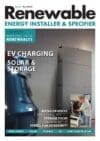
In his first article, (REI October 2023) Mark talked us through the difference between working in the ‘able to pay’ sector and working with the ECO4 market.
Here, in part 2, Mark throws the textbook out of the window to share more detail about the scheme itself.
My previous article seemed to be very well received and piqued the interest of many installers that were aware of ECO but not sure how to break into it or how they sat within the scheme. In the article and the many calls and emails that followed, I outlined the differences in business models between able to pay and ECO scheme. I thought I would take this opportunity to put a bit more meat on the bone.
I could bore you all by reciting various sections from the ECO guidelines and give you the text book answers to the following questions:
- What it is?
- How can installers get involved?
- What types of installs (measures) are covered?
- How the scheme works?
- What is ECO4 designed to achieve?
- Why is it important to the retrofit sector?
Those installers I work with will know that I don’t follow standard practice and like to keep things as simple and straightforward as possible, so the text book is out of the window. Should you want to want an exacting answer to the questions above, please be my guest and go to the Ofgem guidelines via the link https://www.ofgem.gov.uk/sites/default/ files/2023-08/ECO4%20Delivery%20Guidance%20 v2.0_0.pdf where you can read the full 246 pages and lose the will to live!
When I initially came into the industry, I thought the ‘ECO’ element of the title was referencing ‘Ecological’ given the main aim of the scheme is to tackle fuel poverty and help reduce carbon emissions. Imagine my surprise when I realised it is an acronym of Energy Company Obligation and the number after it is the version of the scheme. We are now on the 4th version, hence ECO4.
You’ll all be aware the sensationalist headlines about energy companies and the profits they make, the Government has targeted them to work a bit harder for these profits. In a nutshell, Ofgem has said that, given the amount of money they are making, they must be obligated to be the driving force behind this scheme. This is how the Energy Company Obligation was born. Houses are being targeted as the easiest way to tackle fuel poverty and reduce carbon emissions and, without getting into a social-economic debate, the decision has been made to focus the funding from the utilities on those houses with residents unable to afford the installs.
This is intended to ensure that whatever money is coming into that household is not all being spent on heating and electricity.
Given this scheme is basically Government money, they want to make sure that the scheme, and all those involved are regulated. The last thing the Government wants is to provide the funds for an install to an incompetent business that delivers a poor result meaning the Government has to pay again to get the install rectified. They want to pay once and once only.
The key players within the ECO industry are:
Trustmark – they are like the police of the scheme. No entity can be involved in the scheme without being Trustmark Approved, and any work undertaken needs to be lodged with them.
PAS (Publicly Available Standards) – this is a certification body that basically confirms the installer has the correct skill set and credentials to undertake the work.
MCS (Microgeneration Certification Scheme) – this is a certification body that focuses on low carbon products and installations.
IBGs (Insurance Backed Guarantees) – these are needed to ensure that, if there are any jobs with poor workmanship, then the homeowner has a means to get it fixed.
Any installation business must be registered with, or accredited by, the entities above. There are some ‘work arounds’ to the above but, in my opinion, this is the most straightforward and easiest way.
Measure for measure
You may read a lot about ‘measures’ within ECO4. This is simply another term for the type of installation taking place. Measures can be very wide ranging – anything from external wall insulation, cavity wall insulation, internal wall insulation, loft insulation, solar panels, air source heat pumps, heating controls (anything that can control heating i.e. these can be dials on radiators through to apps on a mobile connected to the boiler) etc. etc.
How it all works
The mechanics of the scheme was outlined in the previous article but, for those that may have missed it, in a very brief nutshell, this is the business model for an ECO4 Installation Business for example, Hyde Solar:
- Lead generators locate suitable houses (most have an EPC rating of E or below) and make sure the inhabitants also meet the criteria (benefits/ health/age) for the installation.
- This lead is then passed to Hyde Solar for them to sign up and book in a visit to the property to make sure everything is suitable for the installation and diagrams are created or photos taken.
- This information is passed to a Retrofit Assessor (RA) to check the house and inhabitants fit the criteria. A plan of action is drawn up confirming that the suggested measure, if fitted will increase the EPC banding to make sure the house becomes more energy efficient. This involves plenty of reports and calculations.
- This plan of action is provided to a Retrofit Coordinator (RC) to co-ordinate the job and plan what needs to be installed and where in, or on, the house it needs to be installed. This again involves plenty of reports and calculations.
- This is then passed to the actual fitters physically undertaking the installation. Plenty of pictures are needed of before, during and after the installation to confirm it’s been carried out as per the RA/RC specifications.
- Once the installation has taken place, all of the pictures are provided to the RC for them to complete their post installation report and calculations.
- These reports/calculations/photos are then packaged electronically by the Hyde Solar submissions team and sent to a Funder / Managing Agent, such as Ronnan Corporation, to check for compliance.
- The Managing Agent makes sure the installation is scheme compliant and submits the job and all reports/pics to a utility company.
- The utility company submits to Ofgem
- Ofgem pay the utility, the utility pays the Managing Agent and the Managing Agent pays the installer
It’s all about the money in part 3 of this series, as Mark addresses the important matter of the finances behind the scheme. Make sure you are subscribed to get your copy!
Given the amount of interest raised by these insights into ECO4 we are happy for you to share any questions that you have so that we can cover them in future articles.
Please get in touch with Margaret Major, Publishing Director, REI: margaret@renewableenergyinstaller.co.uk
You can read part 1 in this series here
Image credit: Mark Hyde, Ronnan Corporation (Energy) Ltd



